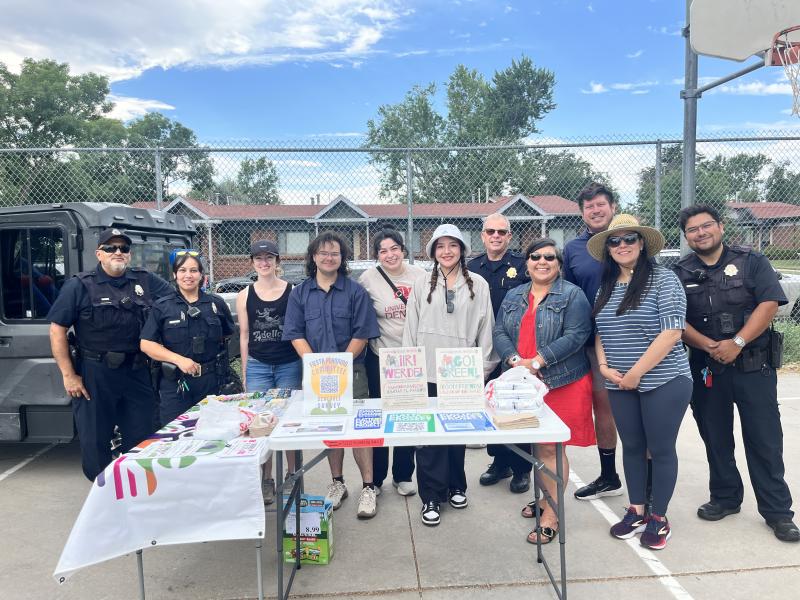Exploring the Feasibility of an Aquaponic Integrated Eco-Park for the South Platte River
By: Skyler Kasnoff, Geography & the Environment, Public Policy

This summer I explored the feasibility of an aquaponic-integrated eco-park for the South Platte River with the Valverde community. I explored the environmental, social, and policy feasibility of creating a park of floating platforms that grow native and food crop plants on the South Platte River as it stretches through Valverde.
By reading extensive documentation and reports about the South Platte River and research papers on eco-parks and aquaponics across the scientific community, I found that eco-park could directly address many of the environmental concerns of the S. Platte, including nitrogen and phosphorus uptake, filtering runoff, managing stormwater, and rehabilitating the lost riparian ecosystem. To explore social feasibility, I worked with the Valverde Neighborhood Association, and formed a close friendship with the Valverde community. Among the first things I learned working with the Valverde community was, "these people need a win, a big hug," as Evon said.
That's why I decided to use my love and skills in graphic design to create beautiful, bi-lingual flyers and posters for the Park Clean Up party and Gals Who Garden Fiesta. I wanted to show the Valverde that they deserve Denver to put hard work, beauty, and commitment into supporting this community. I went door to door in Valverde, handing out fliers about upcoming Park Clean Up events and what VNA does. The great joy of my summer was sitting at the tables of leaders like Evon Lopez, sharing tacos and sandwiches and talking about our projects. In addition to interviewing other leaders, such as Matt Suprunowicz of SustainEd farms, and Councilwoman Torres I found that the community wanted a large, tangible, demonstrative project that exemplifies climate resilience as a synergies, bottom-up approach to longterm climate resilience. I found that this project provides a tangible, real way for Denver to directly manifest many of it's goals for a healthy and climate change resilient city. Upon completing a review of Denver's city planning documents and scientific literature which affirmed the feasibility of an aquaponic integrated eco-park, I decided I needed a better way to communicate my idea with the Valverde community. This is why I created the Platte People's Project. The Platte People's Project (PPP) is the movement to construct an aquaponic integrated eco-park for the S. Platte River in the Valverde Community, and it actively seeks to educate Denver's most climate vulnerable and underserved communities about the importance of climate resilience, and how they can reclaim environmental power and fight climate change on an individual level. I created zines, artwork and fliers to share the reality of climate change and how the eco-park could place power in Valverde's hands. I learned that creating beautiful, high quality artwork that boils down climate change into its most basic components opened the door to sharing my project with the Valverde community, and forming meaningful partnerships.
The final product of my work this summer is a 34 page, 11,000 word report on the feasibility of an aquaponic eco-park, as well as way to share my passion for climate resilience with Denver's communities via uniting environmental science with art and design, and actually showing up in the community. It was a great joy, and I will be returning to continue the Platte People's Project.
The importance of Platte People's Project cannot be overstated. The Intergovernmental Panel on Climate Change (2024) warns leaders across the world that climate adaptation and resilience must be a top priority. If you take away anything from reading this paragraph, let it be this:
"There is a rapidly narrowing window of opportunity to enable climate resilient development. Deep, rapid, and sustained mitigation and accelerated implementation is required in this decade, to reduce projected losses of humans and ecosystems."
This project is far from an act of environmentalism, rather an act of faith in the good of our communities against the monster of climate change.